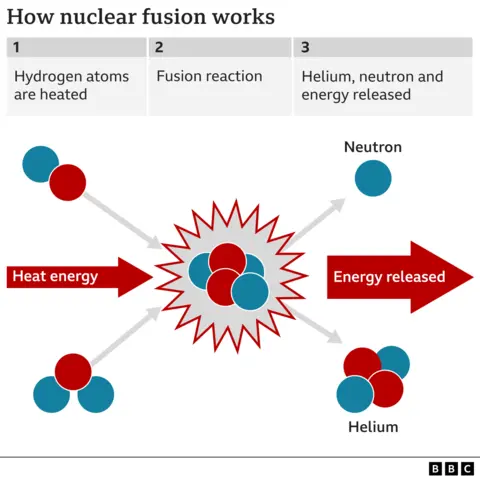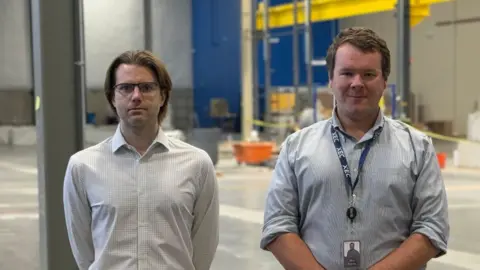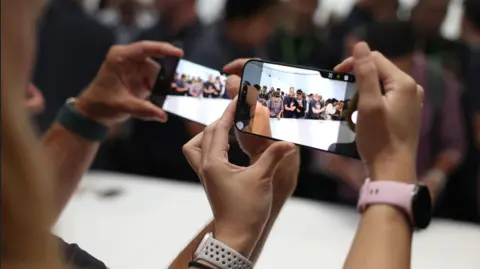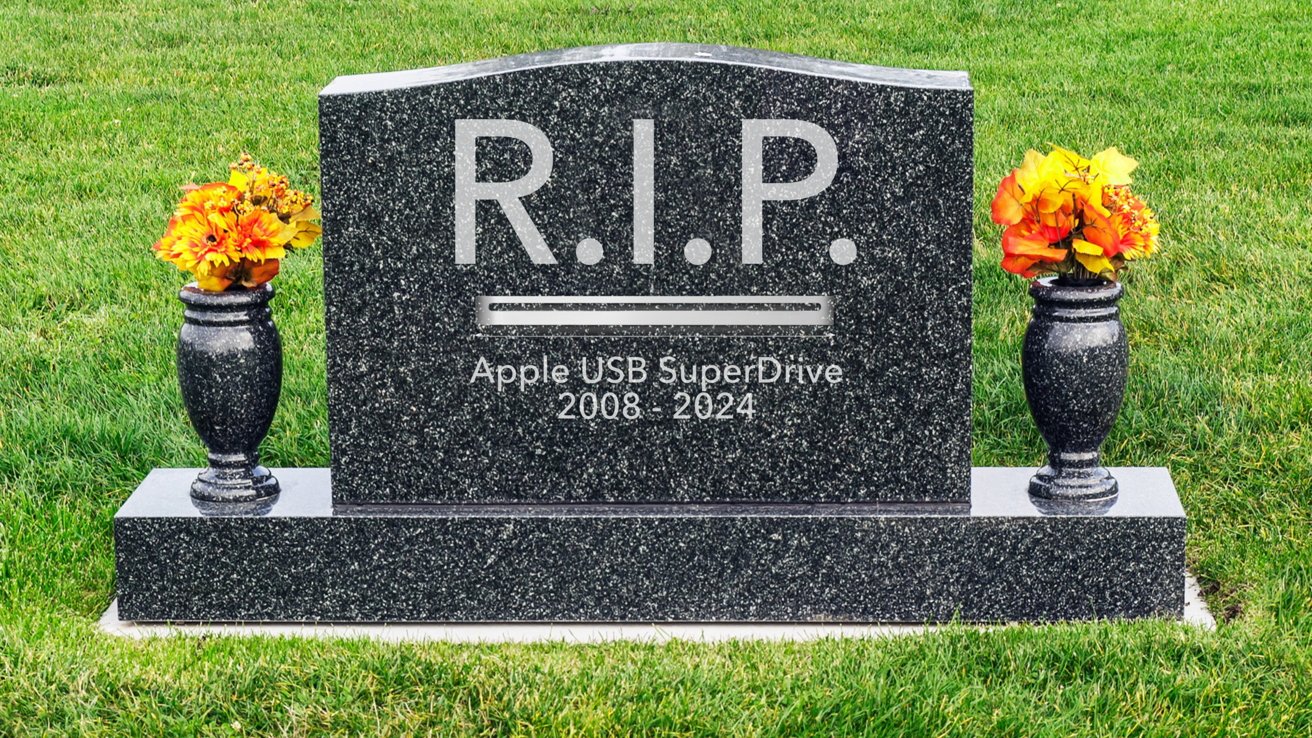Sci-Tech
Apple SuperDrive finally sells out 16 years later

The 2008 MacBook Air didn’t have an optical drive, so Apple sold a separate SuperDrive accessory, which has finally seemingly been discontinued from sale.
Visit Apple’s website, and you’ll see the SuperDrive is sold out. That may signify that the ancient device has finally been pulled from sale.
Apple has never been shy when ditching ports, peripherals, or drives in favor of more modern standards or thinner devices. The MacBook Air is one of the more significant examples, being among the first consumer laptops sold without a disk drive.
Apple’s solution was one it has gone to many times over the years — sell it as a dongle. The USB SuperDrive started life as a $99 accessory to the MacBook Air.
The device has remained available and in the Apple Store for the 16 years since its introduction. The price dropped slightly to $79, and no updates were ever made to the product.
Despite Blu-ray being a thing since 2006, Apple didn’t support the format with SuperDrive. It also used a USB-A connector, meaning users needed an adapter to use it with modern Macs. And, power provided by that port is a consideration, so most hubs and docks can’t drive it.
Technology around optical drives got cheaper and more widely available, so it is safe to say the SuperDrive outlived most of its usefulness more than a decade ago. Users have been able to get much more powerful external drives with USB-C for years and at a much lower price.
The product has sold out on Apple’s website, but it is still available elsewhere while supplies last. It can be purchased from Amazon for $77.99.
Sci-Tech
Sony reveals much more expensive and powerful PlayStation 5 Pro

After years of rumour, speculation and hype, Sony has confirmed it is launching a more powerful – and much more expensive – version of its hugely popular PlayStation 5 console.
The PS5 Pro will be able to show more advanced graphics and display the most demanding games at higher, more consistent frame rates.
But that added power will come at a cost: the PS5 Pro will be the most expensive console from Sony to date.
It will cost £699.99 when it launches on 7 November this year – hundreds of pounds more than the PS5.
“The price point of the PS5 Pro will inevitably cause a lot of commentary,” analyst Piers Harding-Rolls from research firm Ampere said.
He said the firm appeared to be betting that the console’s improved performance would encourage users to upgrade their existing hardware and spend more on software.
Mark Cerny, lead architect of the PS5, said it was “the most powerful console we’ve ever built”.
He said it sought to resolve a problem gamers had faced for years – whether to play a console game in so-called “fidelity mode”, which favours visuals, or “performance mode”, which makes a game smoother, though at the cost to how it looks.
He said the PS5 Pro was about “removing that decision, or at least narrowing that divide”.
GamesIndustry.biz head Christopher Dring told the BBC it was “a very targeted console” for PlayStation’s “most enthusiastic audience”.
“The console industry has had a tough time this year, with falling sales of PS5, Xbox Series S and X, and the ageing Nintendo Switch,” he said.
“PS5 Pro isn’t going to change that situation.”
But he said Sony might have one eye on the most anticipated game in the world – Grand Theft Auto VI – which is due to release next year.
“When GTA 6 does launch, PlayStation will be able to say to players that the game will look best on PS5 Pro,” he said.
Companies have released updated versions of their own consoles with minor revisions for decades, but this release indicates the comparatively new trend of “pro” hardware is here to stay.
Generally, this means hardware changes to current-generation consoles that lets games look better – but critically these tweaked consoles don’t have exclusive games.
In other words, games will still be released for PS5, and gamers can choose whether to play them on a regular console or a pro model with differences in graphics and performance.
Paul Tamburro, from news website PlayStation LifeStyle, said fans had been hoping the console could “bridge the gap” between performance and fidelity modes, and the upgrade would help.
“However, it also feels that the console doesn’t do enough to justify that steep price point,” he said.
“It launching without a disc drive and still only targeting 60 FPS is disappointing.
“This isn’t an easy sell to current PS5 owners.”
It’s Sony’s second major foray into this space after 2016’s PS4 Pro, which brought 4k graphics to the original PlayStation 4.
And it comes three years after Nintendo released its own take on a pro model – a Nintendo Switch with a larger, better screen.
Today’s announcement from Sony is not as significant as the PS4’s jump to 4k graphics, but it still represents a step forward in home consoles.
It comes at a time when PCs have been getting increasingly powerful, with the release of Nvidia’s Geforce 40 series of graphics cards in 2022, which have put PCs firmly ahead of home consoles in the race for the best visuals.
But it’s worth remembering just one of these graphics cards can cost as much as a whole PS5, so consoles tend to strike a balance between the best visuals and the best price.
Like with the last console generation, this release means Sony will now have multiple versions of its PS5 available to consumers, with different price points and specs.
Rumours spread widely ahead of the announcement, with fans speculating on the features an upgraded console might have.
Chief among them were unsourced claims that the PS5 Pro would be backwards compatible with games from previous Sony consoles – with some reports suggesting this would go as far back as the original PlayStation.
There was nothing in the announcement to confirm the rumours.
Sci-Tech
Could powerful lasers power a working reactor?

 Damien Jemison
Damien JemisonDeep under the Nevada desert in the 1980s the US conducted secret nuclear weapons research.
Among the experiments was an effort to see if nuclear fusion, the reaction which powers the sun, could be sparked on earth in a controlled setting.
The experiments were classified, but it was widely known among physicists that the results had been promising.
That knowledge caught the attention of two young graduate students working at the Los Alamos National Laboratory in the late 2000s, Conner Galloway and Alexander Valys.
The Los Alamos lab was originally set up in 1943 as a top-secret site to develop the first nuclear weapons. Located near Santa Fe, New Mexico it is now a US government research and development facility.
“When Alex and I learned about those tests at Los Alamos, our reaction was like ‘wow, inertial fusion has already worked!’. Laboratory-scale pellets were ignited, the details were classified, but enough was made public that we knew that ignition was achieved,” says Mr Galloway.
Nuclear fusion is the process of fusing hydrogen nuclei together, which produces immense amounts of energy. The reaction creates helium and not the long-lived radioactive waste of the fission process which is used in existing nuclear power stations.
If fusion can be harnessed, then it promises abundant electricity, generated without producing CO2.
Those tests in the 1980s led to the US government building the National Ignition Facility (NIF) in California, a project to see if nuclear fuel pellets could be ignited using a powerful laser.
After more than a decade of work, in late 2022 researchers at NIF made a breakthrough. Scientists conducted the first controlled fusion experiment to produce more energy from the reaction than that supplied by the lasers which sparked it.

While physicists around the world marvelled at that breakthrough, it had taken the scientists at NIF much longer than expected.
“They were energy starved,” says Mr Galloway.
He doesn’t mean they needed more snacks, instead the NIF laser was only just powerful enough to ignite the fuel pellet.
Mr Galloway and Mr Valys think that more powerful lasers will make it possible to build a working fusion reaction that can supply electricity to the power grid. To do that they founded Xcimer, based in Denver.
NIF had to make do with a laser that could pump out two megajoules of energy. Mr Galloway and Mr Valys are planning to experiment with lasers that can supply up to 20 megajoules of energy.
“We think 10 to 12 [megajoules] is the sweet spot for a commercial power plant,” says Mr Galloway.
Such a laser beam would hit the fuel capsule with a powerful punch. It would be like taking the energy of a 40-tonne articulated lorry travelling at 60mph and focussing it on the centimetre-sized capsule for a few billionths of a second.
More powerful lasers will allow Xcimer to use larger and simpler fuel capsules than NIF, which found it difficult to perfect them.
 Xcimer
XcimerXcimer joins dozens of other organisations around the world trying to build a working fusion reactor.
There are two main approaches. Smashing a fuel pellet with lasers falls under the category of inertial confinement fusion.
The other way, known as magnetic confinement fusion, uses powerful magnets to trap a burning cloud of atoms called plasma.
Both approaches have daunting engineering challenges to overcome.
In particular, how do you extract the heat generated during fusion so you can do something useful with it, like drive a turbine to make electricity?
“I suppose my scepticism is, I haven’t yet even seen a persuasive conceptual diagram of how you manage the process of taking energy out while keeping the fusion reaction going,” says Prof Ian Lowe at Griffith University in Australia.
He has spent his long career working in energy research and policy. While Prof Lowe supports the development of fusion technology, he just argues that a working fusion reactor won’t come fast enough to help bring down CO2 emissions and tackle climate change.
“My concern is that even the most optimistic view is that we’d be lucky to have commercial fusion reactors by 2050. And long before then we need to have decarbonized the energy supply if we’re not going to melt the planet,” he says.
Another challenge is that the fusion reaction produces high energy particles that will degrade steel, or any other material that lines the reactor core.
 Getty Images
Getty ImagesThose in the fusion industry don’t deny the engineering challenges, but feel they can be overcome.
Xcimer plans to use a “waterfall” of molten salt flowing around the fusion reaction to absorb the heat.
The founders are confident that they can fire the lasers and replace the fuel capsules (one every two seconds) while keeping that flow going.
The flow of molten salt will also be thick enough to absorb high energy particles that could potentially damage the reactor.
“We just have two relatively small laser beams coming in from either side [of the fuel pellet]. So you only need a gap in the flow big enough for those beams, and so you don’t have to turn off and turn on the entire flow,” says Mr Valys.
But how quickly can them make such a system work?
Xcimer plans to experiment with the lasers for two years, before building a target chamber, where they can target the fuel pellets.
The final stage would be the working reactor, which they hope would be plugged into the electricity grid in the mid-2030s.
To fund the first phase of their work, Xcimer has raised $100m (£77m) . The money will be used to build a facility in Denver and the prototype laser system.
Hundreds of millions dollars more will be needed to build a working reactor.
But for the founders of Xcimer, and other fusion start-ups, the prospect of cheap, carbon-free electricity is irresistible.
“You know, it’ll change the trajectory of what’s possible for humanity’s progress,” says Mr Valys.
Sci-Tech
Apple banks on AI to boost sales of its new iPhone

 Getty Images
Getty ImagesWith business slumping, Apple has been under pressure to show what it will offer buyers to jumpstart a new wave of iPhone sales.
On Monday, the technology giant revealed its hand – the iPhone 16 which has a camera button on the outside of the handset.
The button is an external clue to the changes Apple said it had made inside its latest smartphone, aimed at harnessing the latest in artificial intelligence (AI).
Apple’s chief executive Tim Cook said the upgrades would “push the boundaries of what a smartphone can do” but the firm has tough competition, as other brands have already integrated generative AI features into their handsets.
Apple’s share price fell during its “Glowtime” event, where it unveiled the iPhone 16 as well as other products, and ended the day flat. The company, worth $3 trillion, is facing concern that it is losing its edge in the burgeoning area of artificial intelligence.
Sales of the iPhone – Apple’s most important product which accounts for around half of its total sales – have stalled in recent months. They slipped by 1% over the nine months ended 29 June compared with a year earlier.
Apple said its new phones, which come with longer lasting batteries, more powerful chips and enhanced privacy features, were its first built specifically to handle AI and its new “Apple Intelligence” tools, many of which were announced in June.
Those include new tools for writing and creating new emojis as well incorporating OpenAI’s chatbot ChatGPT into Siri to help users with some queries and text generation requests.
On Monday, Apple also announced updates to its Apple Watch and its AirPod headphones, which will allow them to automatically drop the volume when users start in-person conversations and to decline calls with the shake of a head.
It said the Pro version of its AirPods would be able to be used as a “clinical grade” personal hearing aid for people with mild or moderate hearing loss.
The company said it was expecting marketing approval from regulators for the device “soon” and the feature would be available this autumn in more than 100 countries, including the US, Germany and Japan.
Previously, the company had a feature that allowed people to pair hearing aids with iPhones and other devices.
The products were rolled out at a glossy event where protestors gathered in a designated free speech area across the street, urging executives to ramp up efforts to protect children from dangerous content in the company’s App Store.
The protest featured a life-sized blow-up made to resemble Mr Cook.
Sales of the new range start in September, with prices for the iPhone16 starting at $799.
But the Apple Intelligence features are not set to be available on operating systems until October, starting in the US and heading to other countries in the following months. They will be available in the UK in December.
Ben Wood, chief analyst at the market research firm CCS Insight, said it was likely that many people would dismiss the company’s new camera control as a “glorified shutter button”.
But he said it offered “very significant” upgrades, including visual, AI-powered search and he came away from the presentation persuaded that Apple would win over customers.
“The combination of Apple Intelligence and new camera features on the iPhone 16 will help spur upgrades from loyal Apple customers,” he said. “Particularly as Apple is positioning this latest update as being a future-proof purchase for customers wanting to get Apple Intelligence features as they roll out over the next few years.”
 EPA
EPAApple has been slower than rivals Samsung and Google to bake generative AI features for photo editing, translation and web browsing into its devices.
Competitors are now building them into folding, flipping and even tri-folding smartphones.
Pre-orders for Huawei’s new tri-fold phone, the Mate XT, reportedly hit more than three million on Monday.
Gartner analyst Annette Zimmermann said because Apple was rolling out AI-ready smartphones later than rivals, it was “critical” they deliver.
She warned that rolling the features out before they were ready could risk their reputation or prompt sales losses.
-

 African History5 years ago
African History5 years agoA Closer Look: Afro-Mexicans 🇲🇽
-

 African History8 months ago
African History8 months agoBlack History Facts I had to Learn on My Own pt.6 📜
-

 African History5 years ago
African History5 years agoA Closer Look: Afro-Mexicans 🇲🇽
-

 African History1 year ago
African History1 year agoMajor African Tribes taken away during the Atlantic Slave Trade🌍 #slavetrade #africanamericanhistory
-

 African History1 year ago
African History1 year agoCameroon 🇨🇲 World Cup History (1962-2022) #football #realmadrid #shorts
-

 African History1 year ago
African History1 year agoWhat did Columbus Find in 1493? 🤯🔥🔥 #history #civilization #mesoamerica #africa #kemet
-

 African History7 months ago
African History7 months agoBlack History Inventors: Mary Kenner 🩸
-

 African History1 year ago
African History1 year agoOrigin Of ‘Cameroon’ 🇨🇲😳#africa






































